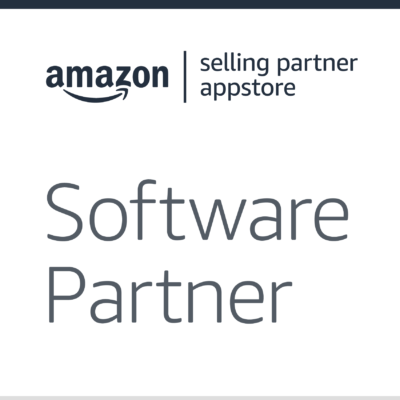
There are multiple ways in which businesses can harness the buying potential of the ecommerce giant Amazon. Utilising Seller Central is one of them.
However, is EDI available for Seller Central? There’s confusion for many businesses regarding Amazon EDI connections and how they work.
In this blog, we demystify some of the complexities around connecting to Amazon and also explain how our Amazon EDI solutions can transform the order to fulfilment processes.
Integrate with Amazon
Automate the fulfillment of Amazon Seller Central orders thanks to our certified Selling Partner API integration.

Amazon Seller Central vs. Vendor Central
Firstly, there are two main camps that Amazon trading partners fall into; Amazon Seller Central and Amazon Vendor Central. And this is where some of the confusion arises for businesses wanting to sell via Amazon. The main question being; what is the difference between Amazon Seller Central and Amazon Vendor Central?
Amazon Seller Central is the platform used by third-party sellers to connect to the Amazon marketplace and sell directly to Amazon’s customers. Businesses using Seller Central have a choice of how they deal with Amazon customer orders (explained in the next section).
Whereas, Amazon Vendor Central is the platform used by first-party sellers, such as manufacturers and distributors, therefore acting as a supplier to Amazon and selling to them directly in bulk. Access to Amazon Vendor Central is by invitation only and businesses will need to pass a number of requirements to be approved.
For the purpose of this blog, we will be focusing on Amazon Seller Central connectivity.
Types of Amazon Seller Central
Businesses have a couple of choices of how they wish to connect with Amazon Seller Central: Amazon FBA (Fulfilment By Amazon) or Amazon Direct Fulfilment (Dropship). The choice between these is straightforward. It depends how you would like to handle incoming customer orders:
Amazon FBA
FBA means that Amazon will be fulfilling the full order process. This includes the warehousing of stock as well as the pick, pack, and delivery of goods to customers.
Amazon Direct Fulfilment
Direct fulfilment is a dropship option, where Amazon orders are communicated to the seller to fulfil. Therefore a multitude of messages are exchanged between the parties to ensure efficient and accurate order processing.
EDI for Seller Central
In both situations, harnessing an integrated EDI solution to exchange messages between parties is incredibly efficient and more accurate, as it significantly reduces manual rekeying of data.
Implementing EDI when selling via Amazon Direct Fulfilment is almost a necessity due to the volume of messages and the number of different message types. In this case, we’d recommend opting for an integrated solution with Amazon Direct Fulfilment, so that all your order data is automatically transferred from your system(s) to the Amazon platform.
Below is an outline of the message flow that could be automated with an EDI integration for Amazon Direct Fulfilment:
Order Fulfilment Request (OF) – sent by Amazon to the seller once an order is placed on Amazon marketplace
Order Fulfilment Response (OFR) – sent by the seller to Amazon indicating whether they accept or reject the order
Shipment Label Request (SL) – sent by the seller to Amazon requesting a shipment label for the order to be sent to the customer
Shipment Label Response (SLR) – sent by Amazon to the seller with the shipment label details
Truck Manifest Notification (TMN) – sent by the seller to Amazon to confirm the manifest of packages ready to be shipped
Truck Manifest Notification Response (TMNR) – sent by Amazon to the seller to either confirm or reject the manifest
Advance Shipment Notice (ASN) – sent by the seller to Amazon, informing them of the shipment of the product to the customer
Additional messages will also be exchanged if there is a cancellation or a request is rejected (e.g. shipment label or truck manifest). This will usually occur if there is a mismatch of information between documents, such as missing or invalid item details/label format/shipment ID etc.

Why EDI is essential for Amazon sellers
Seeing the outline of the generic message flow above should be enough to convince any organisation that an entirely digitised and automated approach to order communications is essential. This approach makes it even more efficient, reliable and transparent for all parties involved.
An integrated EDI solution offers many organisations peace of mind, by removing time-consuming and costly manual processing, which is often also error-prone.
Recently, clients have been turning to our integrated EDI solutions for Amazon Direct Fulfilment connectivity. This has been, in part, due to restrictions of the sharing of Personal Identifiable Infomation (PII data) and changing shipping label formats, as Amazon switched to a different courier. The new SLR messaging has meant that sellers have needed to adjust their data processing and in some cases even needed the SLR in a different file format for it to be compatible with their own systems.
Our solutions have helped clients manage these changes to their communications with Amazon. We introduced an integrated solution that can fully automate all of these message exchanges. This resulted in greater clarity, efficiency and accuracy for our clients.
Are you using Amazon Seller Central and need greater efficiency in order processing and fulfilment? Take a look at our dedicated Amazon Seller Central API integration, which is a certified Amazon Selling Partner solution. This coveted status means our automated solution is trusted to securely handle and process PII data on our clients’ behalf – which allows for the automation of shipment labels and routing of order information to the right endpoints (e.g. a warehouse or 3PL provider) to then fulfil.
eDI Software
Want to improve your order processing with EDI for Amazon Seller Central? Talk to our dedicated team directly who will run through the best EDI solution for your business: call us on 0845 123 3746 (calling from the UK) or +44 1978 369 343 (for international callers), or contact us via email sales@transalis.com











